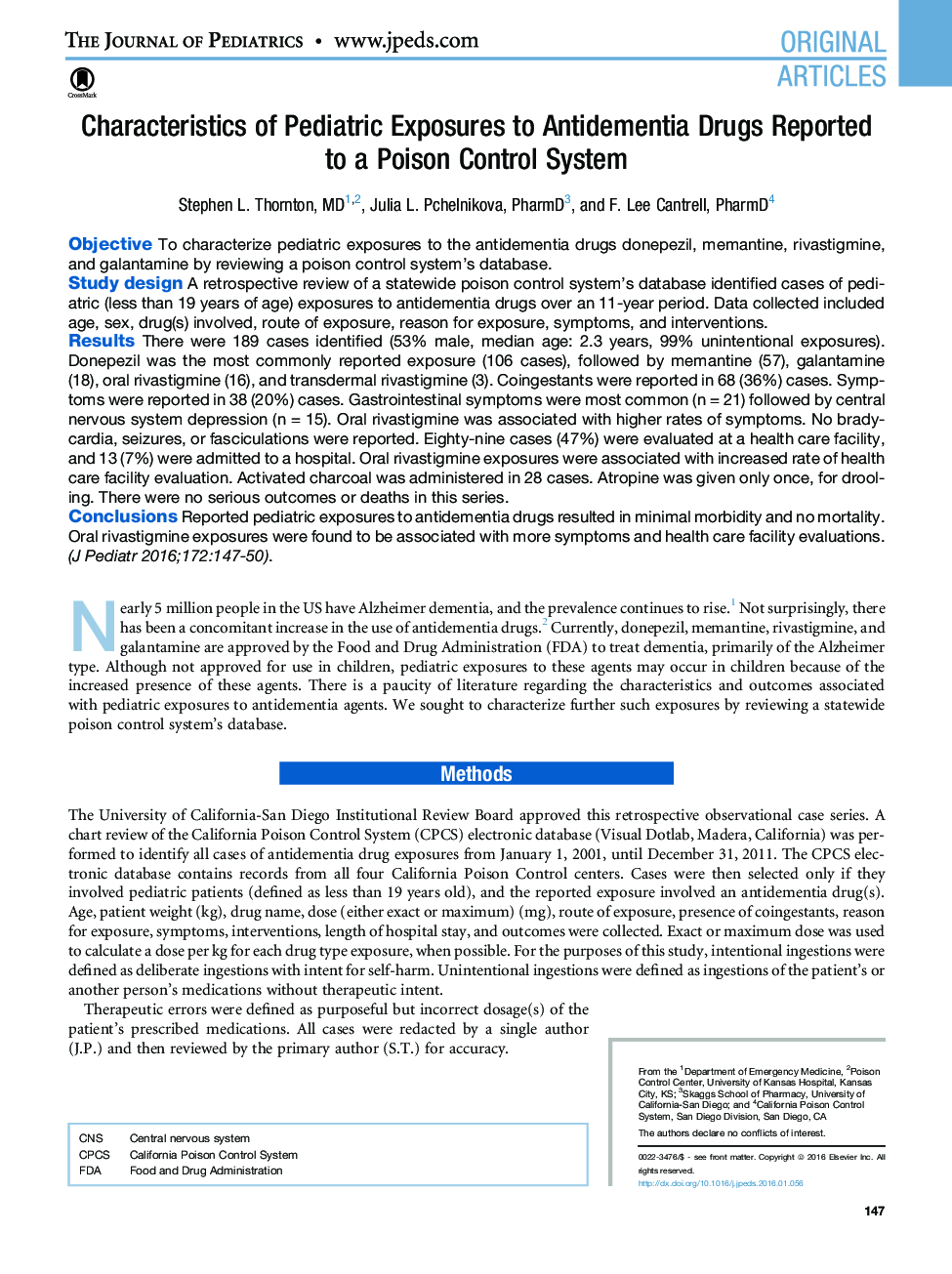| Article ID | Journal | Published Year | Pages | File Type |
|---|---|---|---|---|
| 4164471 | The Journal of Pediatrics | 2016 | 4 Pages |
ObjectiveTo characterize pediatric exposures to the antidementia drugs donepezil, memantine, rivastigmine, and galantamine by reviewing a poison control system's database.Study designA retrospective review of a statewide poison control system's database identified cases of pediatric (less than 19 years of age) exposures to antidementia drugs over an 11-year period. Data collected included age, sex, drug(s) involved, route of exposure, reason for exposure, symptoms, and interventions.ResultsThere were 189 cases identified (53% male, median age: 2.3 years, 99% unintentional exposures). Donepezil was the most commonly reported exposure (106 cases), followed by memantine (57), galantamine (18), oral rivastigmine (16), and transdermal rivastigmine (3). Coingestants were reported in 68 (36%) cases. Symptoms were reported in 38 (20%) cases. Gastrointestinal symptoms were most common (n = 21) followed by central nervous system depression (n = 15). Oral rivastigmine was associated with higher rates of symptoms. No bradycardia, seizures, or fasciculations were reported. Eighty-nine cases (47%) were evaluated at a health care facility, and 13 (7%) were admitted to a hospital. Oral rivastigmine exposures were associated with increased rate of health care facility evaluation. Activated charcoal was administered in 28 cases. Atropine was given only once, for drooling. There were no serious outcomes or deaths in this series.ConclusionsReported pediatric exposures to antidementia drugs resulted in minimal morbidity and no mortality. Oral rivastigmine exposures were found to be associated with more symptoms and health care facility evaluations.
